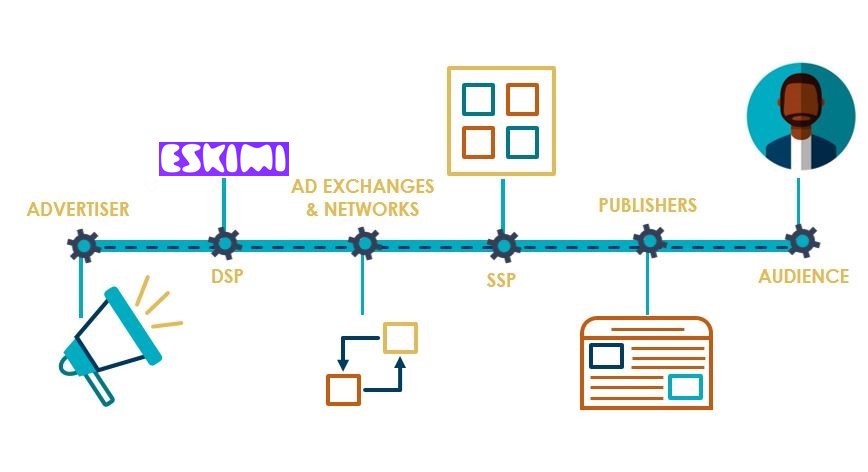Introduction to Programmatic
Meet Stanley, a middle-aged man in Nigeria. The first thing he does every morning - he opens Punchng.com to see the latest political insights and sports news. Thousands of advertisers want to show their ads to Stanley, and programmatic ad buying gives the possibility to efficiently do it. Even though Programmatic ad buying has changed the face of online advertising, there’s still confusion around what it actually is. Therefore, we wish to explore how the Programmatic ad buying works from the lens of the usual online users.
Online Advertising With Programmatic Buying
The easiest explanation would be that programmatic is buying digital advertising space automatically, with data to decide which ads to buy and how much to pay for them, often in real-time. There is, however, a frequent misunderstanding that all programmatic is real-time advertising. That is a subset of programmatic. Real-time advertising is an auction-based model, whereas programmatic is based solely on automation.
Programmatic can be split up into several features:
Data Management Platform (DMP). By enabling data and technology, programmatic gives marketers the possibility to have a lot of data points about users like Stanley, from the device he is using to what interests him.
Inventory. Also, one of the key features of programmatic gave the possibility to move from one straightforward media buy with a publisher to conducting media transactions on an impression-by-impression basis. Rather than buying a million impressions on Punchng.com in one go and committing to that over a period of time, a brand can buy a million impressions and split them across multiple publishers or media owners, targeted at a particular audience segment.
Programmatic guarantee. Another aspect of programmatic advertising is guaranteed impressions. A price is pre-agreed by the buyer and seller before the impressions go live on the website.
Real-time functionality. Programmatic is enabling marketers to track the impact of their investment and optimise their ad campaigns when reaching their relevant customers. The real-time optimisation functionality gives brands the possibility to react to market fluctuation, user interactions online, and other relevant data points.
To sum it up, with the machine learning capabilities, Programmatic allows reaching users like Stanley and appearing on sites such as Punchng.com. However, it is up to the brand to decide if the programmatic adoption goes along with its niche business goals.
Introduction to Eskimi DSP
Eskimi DSP is a demand-side platform that allows advertisers to buy inventory through ad exchanges in real-time. Using this platform, you can set up and launch your campaign by yourself which will save time and costs. Moreover, this platform helps to advertise and reach your wanted audience much easier by providing a variety of relevant information such as what are your target audience is interested in, what devices are they using, where do they use it, and so on.
Furthermore, Eskimi DSP is combined with a data management platform (DMP) where the customer and online advertising data is stored and managed. For example, DMP has a data dashboard that visually tracks, analyses, and displays your campaign metrics in real-time. On the Eskimi DSP dashboard, you can see impressions, CPM, Win rate, Clicks, CPC, CTR, best and worst-performing ads, Platforms, Operating Systems, and Delivery Map by Hour.


